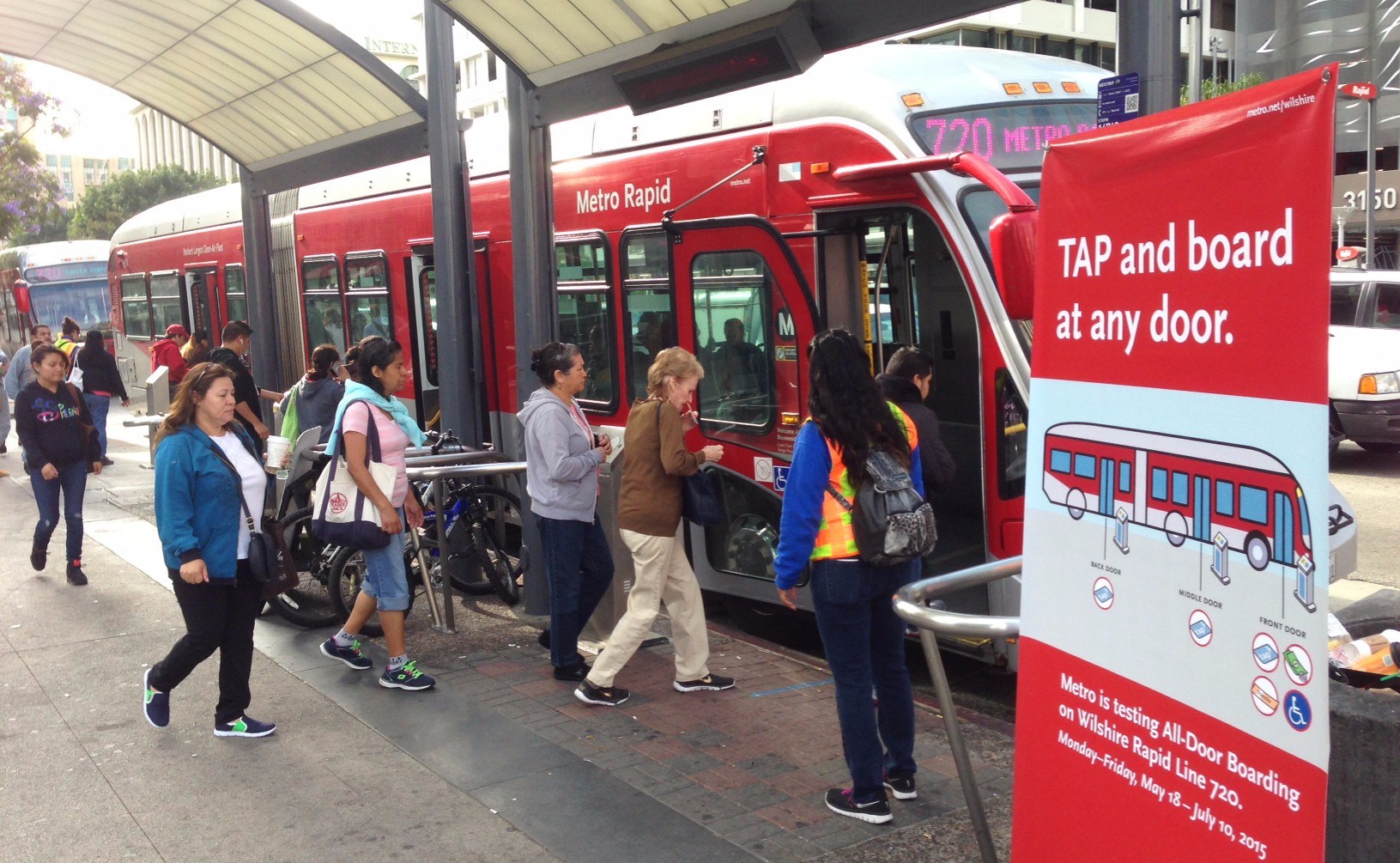TMD developed a Strategic Bus Network Plan (SBNP) for LA Metro. The SBNP identifies corridors for high capacity, high frequency transit service with targeted infrastructure enhancements. LA Metro recognized that mobility is changing in the region: voters approved an initiative to fund a number of rail investments, the demand for multimodal alternatives is increasing, and development patterns are becoming more sustainable. As such, LA Metro commissioned the SBNP to leverage new bus corridor infrastructure and to support increasing demand for bus transit service.
The methodology for the SBNP was initially developed using a review of peer case studies and industry best practices, and was further refined during project team discussions and calibrated using current actual performance. The methodology started at the block level and built the corridors and corridor segments through a multi-screening network linkage process. Each corridor was evaluated based on future population and employment density, ridership volumes, network synergy, and local/regional network connectivity.
The result of the screening process focused on identifying candidate corridors that would support one of four proposed levels of potential infrastructure and service investment:
- Full BRT 5-minute service
- BRT Lite 5-minute service
- Rapid 10-minute service
- Frequent Local 15-minute service
The SBNP methodology and results have been vetted and accepted by LA Metro stakeholders and staff, and coordinated with City of Los Angeles initiatives for transit enhanced corridors. The SBNP serves as a guide and advocacy tool for future bus investments. It also informed future funding initiatives (Measure M), system restructuring studies, and corridor studies, as well as local and regional development plans.

